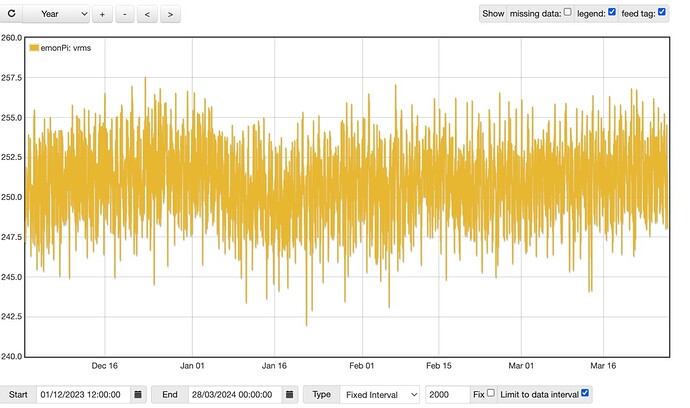I recently updated my old emonPi to the latest CM firmware (from the original Classic firmware), The process was a little fraught…but over the last few days it’s seems to be working again (although sadly I did manage to inadvertently delete my old histori feeds…but c’est la vie!)
What I have noticed is the emonPi now to be measuring much higher power readings, and also a higher Vrms reading. I guess I shouldn’t be surprised at some difference, given the continuous nature of the new monitoring…but the readings are definitely much higher than I expected.
During the last Octopus Energy Saving session (29th Nov, 5.00pm-6.30pm), Octopus seem to think I used 0.29kWh, 0.26kWh & 0.26kWh of energy in each of the three 30 minute blocks. This is quite close to what my emonPi was reading with the old firmware (not exacty but the emonPi monitors the house, and in the garage there is some unmonitored circuits with a small amount of energy consuming equipment (garage door opener, maglock power supply, external light sensors, for instance). I don’t remember ever calibrating the old firmware…and the monthly cumulative power readings were within a couple of kWh of the bills each month (which I attributed to garage power usage).
With the new CM firmware, this is the power usage measured in the Savings Session window yesterday
The new firmware seems to be measuring about double our meter measured usage, and about double what I would have expected using the old firmware (over a number of years of using the emonPi with old firmware, I have a pretty good idea what the house energy usage is like with most devices turned off)
On the Vrms side…over a year the old firmware measured our mains voltage mostly around 232V, and nothing higher than 238V. Here’s a histogram of a year worth of readings.
With the new firmware I seem to be seeing a higher average voltage (although with just a couple of days readings that’s probably not a great sample population)
Is this behaviour expected in a move to the new CM firmware, or maybe there a default calibration or factor applied somewhere which I may have wiped out when re-configuring the new firmware in the emoncms.cfg file?
Any thoughts around what might be occurring?
Thanks







